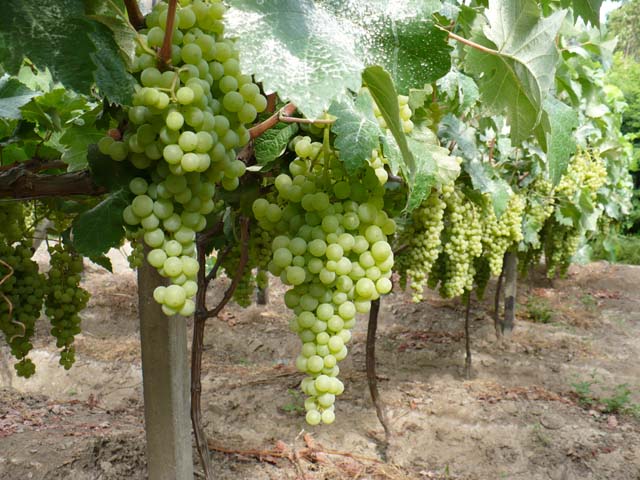The grapes used to produce wine and Pisco were brought to Colonial America from Spain during the 17” century. To day, only eight varieties of grapes are officially recognized as a source for Pisco production, divided into the following two groups:
The grapes used to produce wine and Pisco were brought to Colonial America from Spain during the 17” century. To day, only eight varieties of grapes are officially recognized as a source for Pisco production, divided into the following two groups:
production, divided into the following two groups:
Non-Aromatic Grapes
Quebranta, Mollar, Negra Criolla and Uvina:
Negra Criolla is known as the “Mission Grape” in California.
Pisco is most commonly made with the Quebranta grape, which is beleived to be a mutation of the Negra Criolla grape, resulting from its adaptation to the specific weather and soil conditions of the Peruvian valleys. This grape produces a Pisco characterized by an elegant aroma of dry fields, bananas, tropical fruits, chocolate and black raisins.
Aromatic Grapes
Italia, Moscatel, Torontel and Albilla.
These are mainly muscatel grapes.
Pisco Varieties
There are three different types of Pisco:
1.-Pisco Puro (Pure Pisco): Pisco produced from only one of the eight recognized varieties (single-variety Pisco).
2.-Pisco Acholado (Blended Pisco):
Pisco produced by blending at least two recognized varieties of grapes.
3.-Pisco Mosto Verde (Green Must Pisco):
Pisco that is produced when the fermentation process is interrupted in order to distill the must, which still has traces of sweetness. (This must is “green”. If the fermentation process had been allowed to conclude, the distilled product would have been made of “mature” must.) This process instills the body, aroma and flavor of this special kind of Pisco with more complexity. Unlike Pure Pisco and Blended Pisco, Green Must Pisco requires more than twice as many kilograms of grapes to produce one liter of Pisco.
The grapes used to produce wine and Pisco were brought to Colonial America from Spain during the 17” century. To day, only eight varieties of grapes are officially recognized as a source for Pisco
 production, divided into the following two groups:
production, divided into the following two groups:Non-Aromatic Grapes
Quebranta, Mollar, Negra Criolla and Uvina:
Negra Criolla is known as the “Mission Grape” in California.
Pisco is most commonly made with the Quebranta grape, which is beleived to be a mutation of the Negra Criolla grape, resulting from its adaptation to the specific weather and soil conditions of the Peruvian valleys. This grape produces a Pisco characterized by an elegant aroma of dry fields, bananas, tropical fruits, chocolate and black raisins.
Aromatic Grapes
Italia, Moscatel, Torontel and Albilla.
These are mainly muscatel grapes.
Pisco Varieties
There are three different types of Pisco:
1.-Pisco Puro (Pure Pisco): Pisco produced from only one of the eight recognized varieties (single-variety Pisco).
2.-Pisco Acholado (Blended Pisco):
Pisco produced by blending at least two recognized varieties of grapes.
3.-Pisco Mosto Verde (Green Must Pisco):
Pisco that is produced when the fermentation process is interrupted in order to distill the must, which still has traces of sweetness. (This must is “green”. If the fermentation process had been allowed to conclude, the distilled product would have been made of “mature” must.) This process instills the body, aroma and flavor of this special kind of Pisco with more complexity. Unlike Pure Pisco and Blended Pisco, Green Must Pisco requires more than twice as many kilograms of grapes to produce one liter of Pisco.
Translated by Katrina Heimark

No hay comentarios:
Publicar un comentario